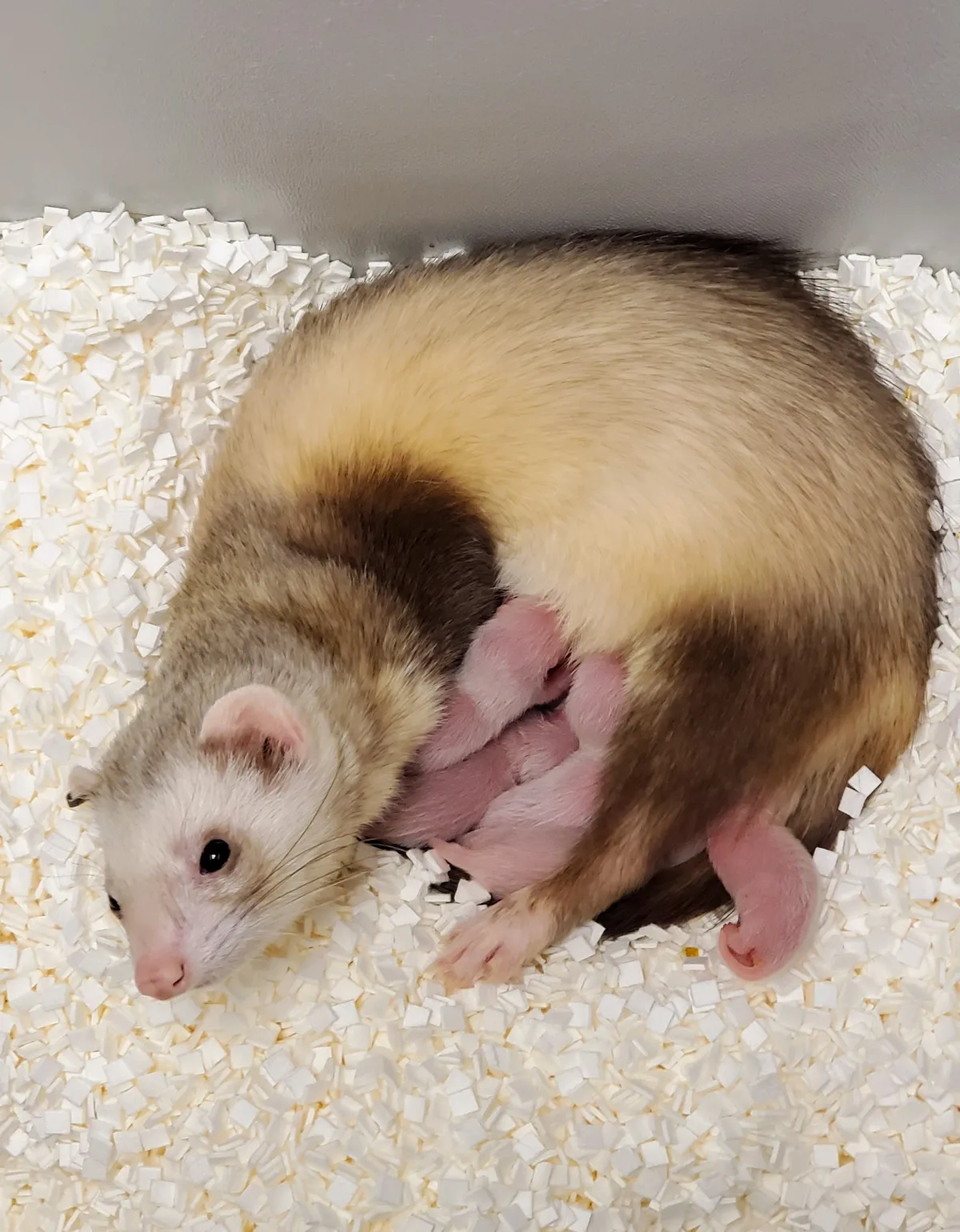The future of the endangered black-footed ferret looks a little brighter following the birth of this adorable little bundle of teeth and fur.
Named Elizabeth Ann, the tiny kit was born on 10 December 2020 at the National Black-Footed Ferret Conservation Center (NBFFCC) in Colorado thanks to the conservation efforts of a collaboration led by the U.S. Fish and Wildlife Service.
Her birth marks the first time an endangered species native to the US has been successfully cloned.
“Although this research is preliminary, it is the first cloning of a native endangered species in North America, and it provides a promising tool for continued efforts to conserve the black-footed ferret,” saidNoreen Walsh, Director of the U.S. Fish and Wildlife Service’s Mountain-Prairie Region.
“Maintaining and increasing wild populations and suitable habitat continues to be essential for black-footed ferret recovery and will remain a priority for the Service,”
Once thought to be extinct and currently listed as an endangered species, black-footed ferrets were brought back from the brink of extinction by the U.S. Fish and Wildlife Service after a Wyoming rancher discovered a small colony hunkered down on his land in 1981.
The Wyoming Game & Fish Department then captured some of the animals to begin a breeding programme in an attempt to recover the species.
However, today, all black-footed ferrets are descended from just seven individuals giving rise to significant genetic challenges in fully recovering the species.
Without an appropriate amount of genetic diversity, a species quickly becomes more susceptible to diseases and genetic abnormalities, as well as suffering from decreased fertility rates and a reduced ability to adapt to changing environments.

Elizabeth Ann was cloned from the genetic material of a ferret named Willa that has been kept in storage at San Diego’s Zoo’s Global Frozen Zoo since 1988.
Crucially, Willa has no currently living descendants making her genes significantly different from the offspring of the seven founding ferrets. This means that if Elizabeth Ann successfully mates and reproduces, she could introduce new genetic diversity to the species.
A team from US cloning experts ViaGen Pets & Equine produced cloned embryos from the frozen cell line and implanted them into a domestic ferret surrogate.
Read more about cloning:
- Should human cloning be allowed?
- What’s the biological difference between identical twins and clones?
- Could we clone a mammoth or a dinosaur?
The surrogate mother was then transferred from ViaGen Pets & Equine to the NBFFCC where she successfully delivered Elizabeth Ann.
“San Diego Zoo Global’s Frozen Zoo was created more than 40 years ago with the hope that it would provide solutions to future conservation challenges,” saidOliver Ryder, Director of Conservation Genetics, San Diego Zoo Global. “We are delighted that we have been able to cryobank and, years later, provide viable cell cultures for this ground-breaking project.”
Elizabeth Ann and her surrogate mother will now live her at the NBFFCC, apart from the other breeding black-footed ferrets, as further research is completed. The team are working to produce more black-footed ferret clones in the coming months as part of continuing research efforts.